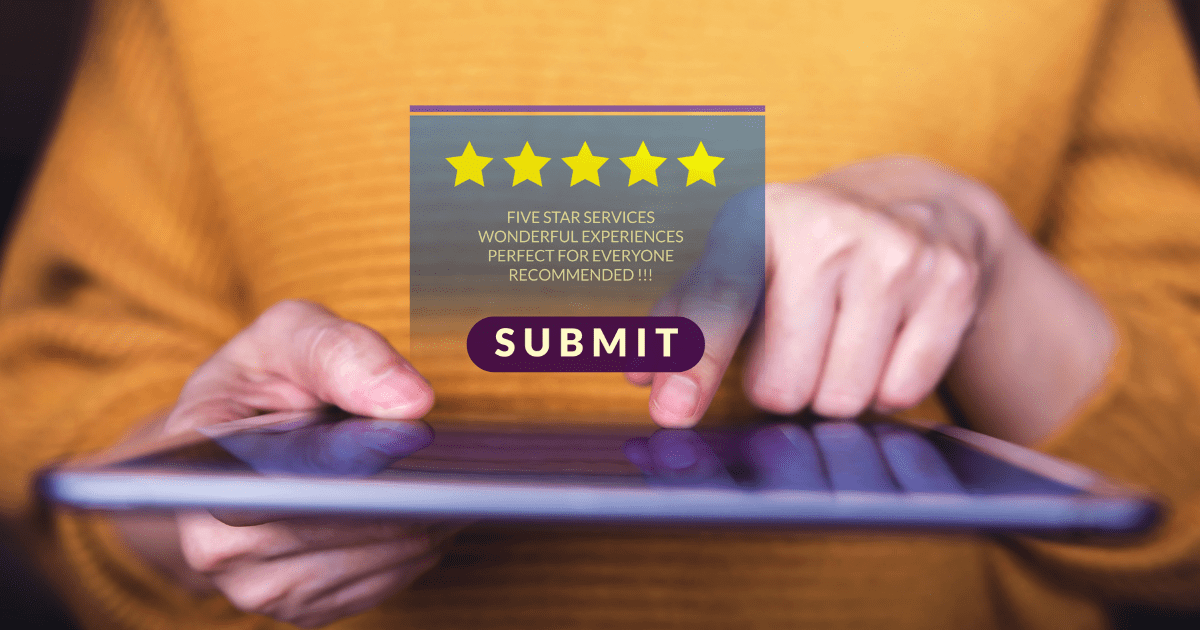Effectively discovering how to generate leads in sales can be the linchpin of success for any business. Sales leads are potential customers who have shown interest in your product or service and are crucial for a thriving business.
In essence, generating sales leads involves sparking interest in your product and cultivating that interest into a desire to purchase. This process varies depending on your business model and target audience. However, it usually involves a combination of marketing and sales efforts.
Stay tuned as we delve deeper into 16+ ways to generate more leads for your business. You wouldn’t want to miss out on these game-changing tactics that could give your business the upper hand in this competitive market.
Introduction to Lead Generation
Lead generation is the lifeblood of the bustling business world that keeps the sales pipeline flowing. It’s more than just a buzzword; it’s a comprehensive strategy that involves attracting and converting strangers and prospects into someone who has indicated a genuine interest in your company’s product or service.
The process of lead generation includes various tactics and techniques, such as content marketing, social media engagement, and search engine optimization.
- One of the key benefits of lead generation is its ability to generate consistent traffic to your website or landing pages. By leveraging compelling content and strategic marketing campaigns, businesses can attract a steady stream of qualified leads, increasing the chances of conversion and revenue generation.
- Moreover, lead generation plays a crucial role in increasing brand awareness. By actively engaging with potential customers and nurturing relationships through personalized communication and value-added content, businesses can create a positive brand image and establish themselves as industry leaders.
Ultimately, the primary objective of lead generation is to secure new customers and drive business growth. By capturing the attention and interest of potential buyers, businesses can guide them through the sales funnel and convert them into loyal customers. This leads to immediate revenue and sets the stage for long-term customer retention and repeat business.

1) Understanding Your Target Audience and Ideal Customer Profile
You must first understand your target audience and ideal customer profile to generate high-quality leads. This involves researching demographics such as age, location, and income and delving deeper into their challenges, motivations, and behaviors. What problems do they face? What drives them to seek out solutions?
Creating detailed buyer personas can help bring clarity to these questions.
A buyer persona is a semi-fictional representation of your ideal customer based on market research and real data about your existing customers. It includes customer demographics, behavior patterns, motivations, and goals.
Understanding your target audience and creating buyer personas isn’t just beneficial—it’s essential. It allows you to tailor your lead generation strategies to the people most likely to become your customers, ensuring you spend your resources effectively and efficiently.
2) Leveraging Content Marketing for Lead Generation
Educational and Informative Content
Educational and informative content is a potent tool in your lead-generation strategy. It’s about creating value, not just for your company but for your prospective clients, too.
You position your business as an authoritative source by sharing insights, industry knowledge, and actionable tips through blog posts, whitepapers, or ebooks.
This approach doesn’t merely generate leads; it cultivates trust and credibility. When potential customers see the depth of your expertise, they’re more likely to consider you when they’re ready to purchase.
Gated Assets in Exchange for Contact Info
Gated assets are another powerful lead-generation method. Offering valuable content—like exclusive reports, webinars, or access to a unique tool—in exchange for contact information can significantly increase your lead database. This tactic provides a win-win scenario: your prospects get valuable resources, and you get their contact information for future engagement and nurturing.
Content Promotion and Distribution
Even the most exceptional content needs promotion to reach its intended audience. Utilize your social media networks, email newsletters, and even partnerships with other businesses to push your content to a broader audience. The more people who see your content, the greater your chances of generating high-quality leads.
3) Implementing Search Engine Optimization (SEO) Strategies
On-Page Optimization to Increase Visibility
On-page SEO is a critical component of any lead-generation strategy. It involves optimizing elements on your website—like meta tags, headings, URLs, and content—with relevant keywords. Proper on-page optimization increases your website’s visibility on search engine result pages, driving more organic traffic to your site and generating more leads.
Target Informational Keywords
Targeting informational keywords is another important aspect of SEO for lead generation. These are the keywords your target audience uses when seeking information about your product or service. By aligning your content with these search terms, you can attract users actively looking for solutions.
Backlink Building
Backlink building is an essential yet often overlooked aspect of SEO. High-quality backlinks signal to search engines that your site is a credible source of information, which can significantly boost your site’s ranking.
Reach out to industry influencers, guest post on reputable sites, and create shareable content to build a robust backlink profile. Higher visibility in search engines means more traffic and, ultimately, more leads for your business.

4) Utilizing Social Media Channels for Lead Generation
Thought Leadership and Community Building
Social media platforms offer a unique space to establish yourself as a thought leader in your industry. Sharing valuable insights, industry trends, and expertise can attract a loyal following and build a community of engaged prospects.
This positions your brand as a trusted authority, increasing the likelihood of generating quality leads. Remember, trust breeds loyalty, and loyalty often leads to sales.
Highlight Offers and Gated Content
As per recent statistics, 66% of marketers have successfully generated new leads through social media channels, underscoring its effectiveness as a lead generation tool.
Social media is also an excellent avenue for promoting gated content. Creating compelling offers, such as free e-books, webinars, or exclusive discounts, and promoting them on social media can entice users to provide their contact information in exchange for valuable content.
This not only generates leads but also aids in nurturing them through targeted email marketing campaigns.
5) Using Paid Advertising for Lead Gen
Paid advertising platforms like Facebook, LinkedIn, X (formerly Twitter) and YouTube offer robust targeting options to reach your ideal audience. You can effectively generate high-quality leads by creating compelling ad campaigns that resonate with your target audience’s interests and needs.
Retargeting and Lookalike Audiences
Retargeting is a highly effective and strategic technique that empowers you to connect with users who have engaged with your brand but have not yet converted into leads. By strategically displaying tailored ads to these users across multiple platforms, you not only reinforce brand recall but also entice them to take the desired action.
Moreover, leveraging lookalike audiences can significantly extend your reach by targeting individuals who exhibit similar characteristics to your existing customer base. This enables you to tap into new segments of potential customers who are more likely to resonate with your brand and offerings, thus expanding your overall market presence and driving further growth.
6) Email Marketing and Lead Nurturing Campaigns
Email marketing is a proven method for nurturing leads through the sales funnel. 78% of marketers utilize this B2B lead generation strategy, making it one of the most widespread approaches in the industry.
Personalization is key here: tailoring email content and messaging to individual prospects. Understanding their needs and interests allows you to create a more personalized experience that resonates with your target audience.
Multi-touch journeys are also an integral part of this strategy. Engaging with prospects at different stages of the buyer’s journey allows for effective lead nurturing. Offering relevant information at each stage increases the chances of converting leads into sales.
Challenges with Email Marketing
Despite its effectiveness, email marketing comes with its own set of challenges. Ensuring your emails reach the inbox and not the spam folder is often a hurdle. Creating engaging content that stands out in a crowded inbox is another.
Additionally, maintaining a healthy list of contacts and managing unsubscribe requests can be time-consuming. All these challenges require a deep understanding of email marketing strategies and tools.
How an Agency Can Help
Seeking professional help from a marketing agency can be a game-changer. A seasoned agency has the expertise to craft compelling, personalized content that captures attention. They understand the ins and outs of email deliverability, preventing your messages from landing in the spam folder.
Furthermore, an agency can manage your contact list effectively, taking the burden off your shoulders. By partnering with a marketing agency, you can overcome email marketing challenges and revamp your lead nurturing efforts.
If you are serious about generating quality leads, hit us up for an effective email marketing strategy tailored to your brand’s needs.
Promotions and Value Delivery
Promotions and value delivery are vital components of lead nurturing. By offering exclusive discounts, special offers, or valuable content, you can provide the incentives that prospects need to take action. Consistently delivering value not only helps establish trust and credibility but also creates a strong foundation for converting leads into loyal customers.
When prospects see that you consistently go above and beyond to meet their needs and provide them with relevant and valuable information, they are more likely to choose your business over others.
This attention to detail and commitment to delivering exceptional value sets you apart from the competition and builds long-term relationships with your customers.
7) Implementing Effective Landing Pages and CTAs
Clear Messaging and Value Proposition
A compelling landing page is essential for successful lead generation. Clear messaging and a strong value proposition are vital. Prospects should immediately understand what you’re offering and how it benefits them. This clarity not only captures the attention of your target audience but also encourages them to take the desired action.
Prominent, Clickable CTAs
CTAs (Call-to-Actions) should be prominently displayed on your landing pages and designed to be easily clickable. Make them stand out from the rest of the page and clearly indicate the next step for the prospect. Visually appealing CTAs increase the chances of conversion. Using persuasive language and creating a sense of urgency can further motivate prospects to take action.
8) Lead Scoring and Grading for Improved Targeting
Identifying Quality Leads through Lead Scoring
Lead scoring is a strategic approach to identifying quality leads. It involves assigning numerical values to each lead based on their engagement with your brand, demographic information, and online behavior.
This system allows your sales team to prioritize leads with the highest score, indicating a higher likelihood of conversion. The result? More efficient use of resources and increased sales productivity.
Grading for Fit and Interest Level
Another crucial aspect of lead targeting is grading leads based on fit and interest level. By assigning a grade to each lead, you can assess how well they match your ideal customer profile and their level of interest in your products or services. This method helps you focus your efforts on high-grade leads, increasing the chances of successful conversions.
Rating Quality and Readiness
Assessing the quality and readiness of leads enables you to identify those most likely to convert into customers. By analyzing buying intent, engagement level, and readiness to interact with your sales team, you can concentrate your efforts on the most promising leads.
Automated Segmentation
Automated segmentation involves dividing your own leads into different groups based on characteristics like demographics, behavior, and preferences. This allows for personalized marketing communication tailored to each segment’s needs, enhancing the effectiveness of your lead-nurturing campaigns.

9) Using Lead Magnets and Incentives
Free Downloads, Discounts, Giveaways
Lead magnets such as free downloads, discounts, and giveaways are powerful incentives that attract potential customers. You can effectively capture and convert leads by offering something of value in exchange for contact information. These incentives entice potential customers, build goodwill, and establish a positive association with your brand.
Encouraging Email Sign-Ups
Encouraging email sign-ups is another effective lead-generation strategy. By providing valuable content like newsletters, industry insights, or exclusive updates, you can motivate visitors to join your email list.
To enhance this strategy further, consider offering additional incentives such as exclusive webinars or access to VIP events. These special perks can elevate the perceived value of joining your email list and further boost your lead-generation efforts.
10) Integrating CRM and Marketing Automation for Lead Nurturing
Integrating Customer Relationship Management (CRM) and marketing automation tools can significantly enhance lead-generation efforts.
Unified Database
A unified database is the cornerstone of successful lead nurturing. Integrating CRM and marketing automation consolidates all lead and customer data into a single, accessible platform. This unified view lets your sales team better understand a potential customer’s journey, leading to more personalized and effective communication.
Workflows and Nurture Tracks
Workflows and nurture tracks enable you to automate the lead nurturing process. Based on your target audience’s behavior and engagement, automated workflows send relevant content at the right time, guiding leads through the sales funnel. These nurture tracks ensure that no potential customer falls through the cracks, improving the overall efficiency of your lead generation strategy.
11) Continuously Testing and Optimizing Strategies
- A/B testing to improve content, CTAs, etc.: A/B testing allows you to determine which versions of your content, CTAs, landing pages, and other elements of your strategy are most effective in generating leads.
- Keep track of metrics and make adjustments: Monitoring key performance indicators (KPIs) such as conversion rates, click-through rates, and bounce rates can provide valuable insights into your strategy’s effectiveness. These metrics can guide you in making necessary adjustments to improve your lead generation efforts.
- Monitoring lead sources and conversions: Understanding where your leads are coming from and how they’re converting can help you identify successful strategies and areas for improvement.
- Identifying successful strategies to optimize: By identifying what strategies work best for your business, you can optimize these methods for better results.
- UTM parameters: UTM parameters in your URLs can help track the effectiveness of your marketing campaigns and identify the sources of your leads.
- Lead source attribution: Accurately attributing leads to their sources can help you understand which marketing channels are most effective in generating quality leads. This information can guide you in allocating your marketing resources more effectively.
12) Collaborating with Influencers and Partnerships
Collaborating with influencers and forming strategic partnerships can be a powerful way to expand your reach and drive online lead generation.
Reach New Audiences through Collaborations
Influencer collaborations can help you tap into new audiences. By partnering with influencers who have a significant following, you can effectively expose your brand to potential prospects who may not have discovered you otherwise. This strategy can generate sales leads and boost your brand’s visibility.
Leverage Their Credibility and Expertise
Influencers have built their following based on credibility and expertise in their specific niche. When these influencers endorse your brand, their followers will likely perceive your products or services as reliable and trustworthy, enhancing your lead quality.
13) Leveraging Webinars for Lead Generation
Webinars are an effective tool in the lead generation process and can significantly boost your sales qualified leads.
Educate, Engage, and Collect Information
According to InsideSales.com, 73% of marketing and sales leaders say webinars are among the best ways to generate quality leads. Webinars provide an opportunity to educate potential leads about your product, service, or industry. They allow you to engage your audience interactively, answer their queries, and collect valuable information about them.
Use as a Lead Nurturing Tool
Webinars can also be a lead nurturing tool in your sales process. You can build relationships with potential leads by offering informative, valuable webinars, moving them further down the buying cycle and closer to becoming happy customers.

14) Providing Exceptional Customer Experience to Generate Referrals
One of the most effective ways to generate sales leads is by leveraging satisfied customers.
Satisfied Customers as Brand Advocates
According to a study, when referred by a friend, people are four times more likely to make a purchase. Therefore, by delivering an exceptional customer experience, you can turn your satisfied customers into brand advocates. These individuals are more inclined to recommend your products or services to their network, greatly improving your online lead generation process.
Incentivize Referrals
Incentivizing referrals can also boost your lead-generation efforts. Offering discounts, rewards, or other incentives to customers who refer their friends or family to your business can motivate them to spread the word and generate more sales leads for your brand.
Encourage Reviews and Referrals through Special Offers
Encouraging your customers to leave reviews or refer your business to others can boost your sales lead generation. Offering incentives such as discounts or special offers can motivate customers to share their positive experiences, driving more potential leads to your business.
15) Networking and Partnerships for Lead Generation
Networking and partnerships can be critical in your sales lead generation strategy.
- Events, referrals, affiliates: Attending industry events or using referral and affiliate programs can help broaden your reach and bring in new leads.
- Co-marketing opportunities with complementary businesses: Collaborating with businesses that complement your own can open up opportunities for co-marketing, reaching new audiences, and generating traffic.
- Joining relevant industry associations and organizations: Membership in these groups can provide networking opportunities and access to potential prospects.
- Collaborating on content creation or hosting joint webinars: This strategy helps find sales leads and adds value for your existing customers.
- Attend networking events and conferences to build connections: Networking events are a great way to meet potential leads in person, build relationships, and follow up later to convert them into sales leads.
16) Utilizing Chatbots for Lead Generation and Customer Service
In the digital age, chatbots have emerged as an innovative tool for online lead generation and customer service. They offer the advantage of being available 24/7, providing immediate responses, and handling multiple conversations simultaneously.
Personalized Conversations with Customers
With advanced AI technology, Chatbots can engage in personalized conversations with customers. Chatbots promptly address their queries and offer tailored solutions, elevating the customer experience.
This level of personalized interaction satisfies customer needs and nurtures relationships, building trust and loyalty. As a result, potential prospects are more likely to progress further down the buying process, ultimately leading to increased conversions and business growth.
Gather Contact Information and Qualify Leads
Chatbots have emerged as indispensable tools in the realm of lead generation. With their ability to ask pertinent questions, collect responses, and evaluate leads based on predefined criteria, they play a pivotal role in gathering contact information for potential customers.
According to a survey by AIMultiple, a staggering 69% of consumers have strongly preferred chatbots that provide instant responses. This inclination towards immediate assistance not only enhances customer satisfaction but also has the potential to significantly boost conversion rates and generate a higher number of sales leads.
By leveraging the power of chatbots, businesses can establish a competitive edge in today’s fast-paced and digitally-driven market.
17) Cold Calling – The Good Old Way
While often seen as an outdated approach, cold calling still holds value in the arsenal of lead generation strategies. Sales managers alike can leverage cold calling to connect directly with potential leads.
This method provides an immediate, personal touch, allowing sales reps to address queries, dispel doubts, and highlight the unique value propositions of their products or services. Despite the rise of digital marketing techniques, the ‘good old way’ of cold calling remains a viable option for sales managers aiming to meet their lead generation targets.
Conclusion: Effective Strategies for Enhanced Lead Generation
Lead generation is a critical aspect of any successful sales process. Knowing how to generate leads in sales involves a consistent, multi-channel approach that includes SEO, content marketing, social media posts, webinars, networking events, influencer collaborations, and exceptional customer service.
It’s crucial for sales teams and marketing teams to continually test and optimize these strategies. The goal should always be to improve lead quality, drive traffic to your website, and, ultimately, generate more sales.
Remember, generating traffic and finding sales leads is only half the battle. Following up with prospective leads, building relationships, and guiding them through the buying cycle are equally important steps in your sales lead generation process.







